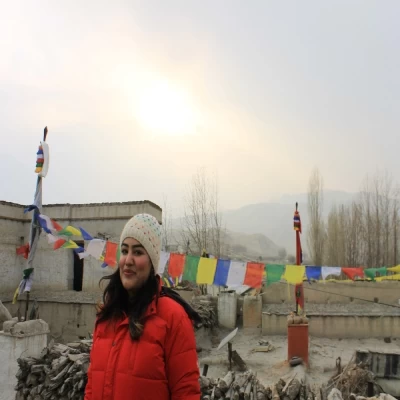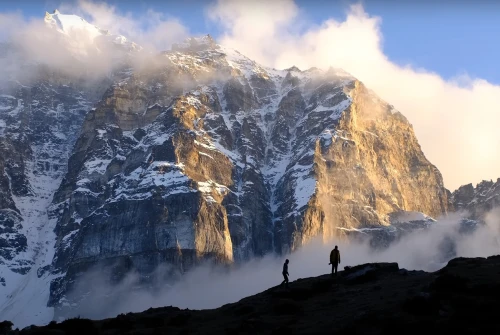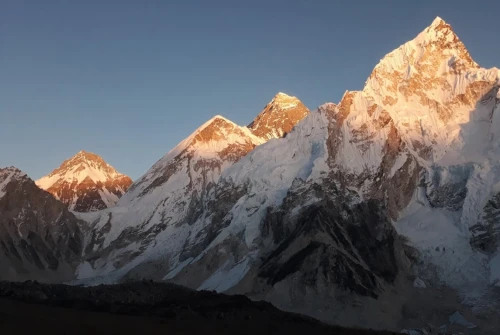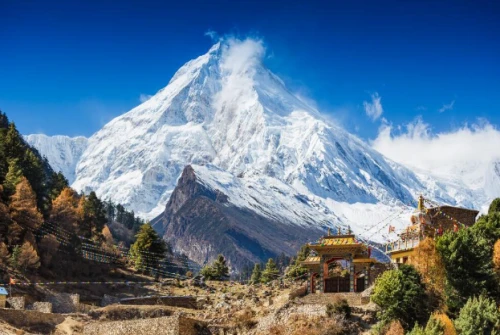Trekking to the Annapurna Base Camp (ABC) is an unforgettable experience, offering trekkers a blend of natural beauty, local culture, and Himalayan adventure. But before taking on this journey, it’s important to understand how much it will cost. Whether you're trekking independently or with a guide, this article gives a complete breakdown of the Annapurna Base Camp trek cost in 2025 so you can plan your trip efficiently.
Total Estimated Cost for Annapurna Base Camp Trek
The total cost of the Annapurna Base Camp trek typically ranges from $500 to $1,200 per person, depending on several factors such as your travel style (independent vs. guided), season of travel, accommodation preferences, and number of trekking days. For budget travelers going independently, the cost can be as low as $500. On the other hand, trekkers opting for more comfort with a guide and porter, better hotels, and faster transportation (like flights) may spend up to $1,200.
Summary Points:
Estimated range: $500–$1,200 per person
Lower budget: Independent trekker
Higher budget: Guided trek with private transport and porter
Duration impacts cost: 7–12 days average
Permit Costs for the Annapurna Region
To trek to Annapurna Base Camp, two essential permits are required. The TIMS card helps ensure your safety by tracking trekkers in the region, while the ACAP permit supports the conservation of the Annapurna region. These permits can be purchased in Kathmandu or Pokhara from authorized tourism offices.
Permit Fees:
TIMS Card: $20 (independent), $10 (with agency)
ACAP Permit: $30
Where to get: Nepal Tourism Board in Kathmandu or Pokhara
Total Permit Cost: $50–60
Transportation Costs to and from the Trailhead
The ABC trek typically begins from Nayapul or Ghandruk, which are accessible from Pokhara. To get to Pokhara from Kathmandu, you can either take a tourist bus (more economical) or a domestic flight (faster but more expensive). Local buses from Pokhara to the trailheads are cheap, but jeeps offer comfort for groups.
Transport Breakdown:
Kathmandu → Pokhara bus: $10–$20
Kathmandu → Pokhara flight: $80–$120
Pokhara → Nayapul (local bus): $2–$5
Pokhara → Ghandruk (private jeep): $40–$60
Total Transport Cost: $30–$150
Hiring a Guide and Porter
Hiring a professional guide is recommended for safety, navigation, and cultural insight. Porters can carry your heavy backpack, allowing you to enjoy the trail comfortably. You can also hire a porter-guide, which is a more budget-friendly option.
Daily Costs:
Guide: $25–$35 per day
Porter: $15–$25 per day
Combined cost for 10 days: $400–$600
Porter-guide option: ~$30/day
Tip recommendation: 10–15% of the total payment
Accommodation Expenses on the Trail
Accommodation along the ABC route consists mainly of basic teahouses or lodges. These lodges offer twin-sharing rooms with beds, blankets, and a pillow. In lower altitudes, some places offer free rooms if you dine at their restaurant.
Lodging Costs:
Room per night: $3–$6
10-day total: $30–$60
Shared bathrooms are standard
No heating in rooms – carry a sleeping bag
Food and Beverage Costs
Food costs increase as you go higher because porters or mules must carry everything. Meals typically include Dal Bhat, noodles, momos, and soups. While food is hygienic and filling, it’s basic. Prices are higher the further you get from cities.
Daily Food Budget:
Breakfast: $3–$6
Lunch/Dinner: $5–$8 each
Drinks (tea, coffee, soft drinks): $1–$3
Snacks (chocolates, biscuits): $1–$2
10-day estimate: $150–$250
Water Costs and Safe Drinking Options
Clean drinking water is essential. Buying bottled water is discouraged for environmental reasons. Instead, trekkers use water purification tablets, filters, or purchase boiled water from lodges.
Drinking Water Tips:
Boiled water: $1–$3 per liter
Water purification tablets: ~$5–$10 (whole trek)
Reusable bottles recommended
Estimated total water cost: $10–$30
Trekking Gear and Equipment Costs
You don’t need to own high-end trekking gear. In Kathmandu or Pokhara, everything is available for rent or purchase. If trekking in peak seasons, reserve gear early. For winter or monsoon treks, ensure proper cold and rain protection.
Gear Costs:
Sleeping bag (rent): $1–$2/day
Down jacket (rent): $1–$2/day
Poles, gloves, hats: $10–$30
Shoes and thermals: $50–$100 if purchased
Total gear budget: $50–$150
Travel Insurance Cost
Travel insurance is often mandatory when trekking with agencies. It should cover high-altitude sickness, emergency evacuation, and trip cancellations. Choose plans that include coverage above 4,000 meters.
Insurance Details:
Cost for 2-week plan: $50–$100
Must include a helicopter rescue
Buy from a reliable international provider
Additional and Miscellaneous Expenses
During the trek, several minor expenses can add up. These include charging devices, Wi-Fi, hot showers, tips, and occasional donations. Most teahouses charge for these services.
Miscellaneous Costs:
Charging electronics: $1–$3 per device
Wi-Fi: $2–$4 per hour
Hot shower: $2–$4
Tips: $20–$50 for guides/porters
Souvenirs/snacks: $10–$20
Total estimate: $30–$60
Trekking Independently vs. Package Tours
The total cost of the trek varies depending on whether you go independently or book through a trekking agency. While independent trekking saves money, organized tours offer convenience, safety, and local expertise.
Cost Comparison Table:
Trek Type | Cost (10 Days) | Inclusions |
Independent Trek | $500–$700 | Permits, accommodation, meals, gear (DIY) |
Guided Private Trek | $800–$1,000 | Guide, porter, meals, permits, accommodation, transport |
Group Trek Package | $700–$900 | Shared guide/porter, group meals, fixed itinerary, permits, lodging |
Best Season to Trek and Cost Impact
The trekking seasons affect the cost significantly. Spring and autumn (March–May and September–November) are the most popular. Accommodation gets booked quickly, and prices can be slightly higher. Off-seasons (monsoon or winter) are quieter and cheaper but more challenging.
Seasonal Pricing Tips:
Peak Season: Higher prices, better weather
Winter/Monsoon: Discounts, fewer crowds, possible delays
Book early during Spring/Autumn
Check weather forecasts daily
How to Save Money on the Annapurna Base Camp Trek
There are several smart ways to reduce your trekking expenses without sacrificing too much comfort. With proper planning, even a low-budget trek can be rewarding and enjoyable.
Money-Saving Tips:
Travel with a group to share guide/jeep costs
Rent gear instead of buying
Stay in teahouses offering free rooms with meals
Carry water purification tablets
Avoid flights – use tourist buses
Final Thoughts – Is It Worth the Cost?
Yes, without a doubt. The Annapurna Base Camp trek is one of the best treks in Nepal in terms of value, diversity, and overall experience. It’s suitable for beginners with moderate fitness and offers a blend of nature, culture, and challenge. With proper planning, you can enjoy this adventure without overspending while staying safe and comfortable. If you are looking for the cost breakdown of the Everest visit Everest Base Camp Trek Cost.
Key Takeaway:
Affordable trek compared to Everest Base Camp
Spectacular mountain views
Authentic local experience
Can be done on a budget or in luxury




